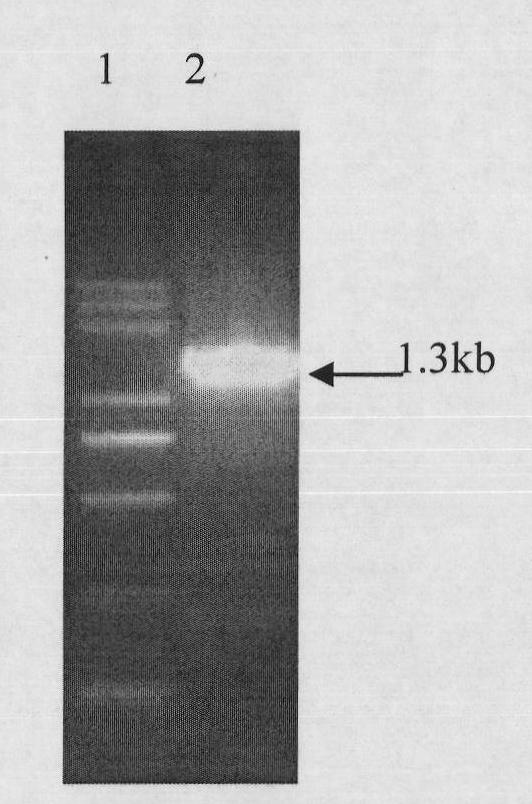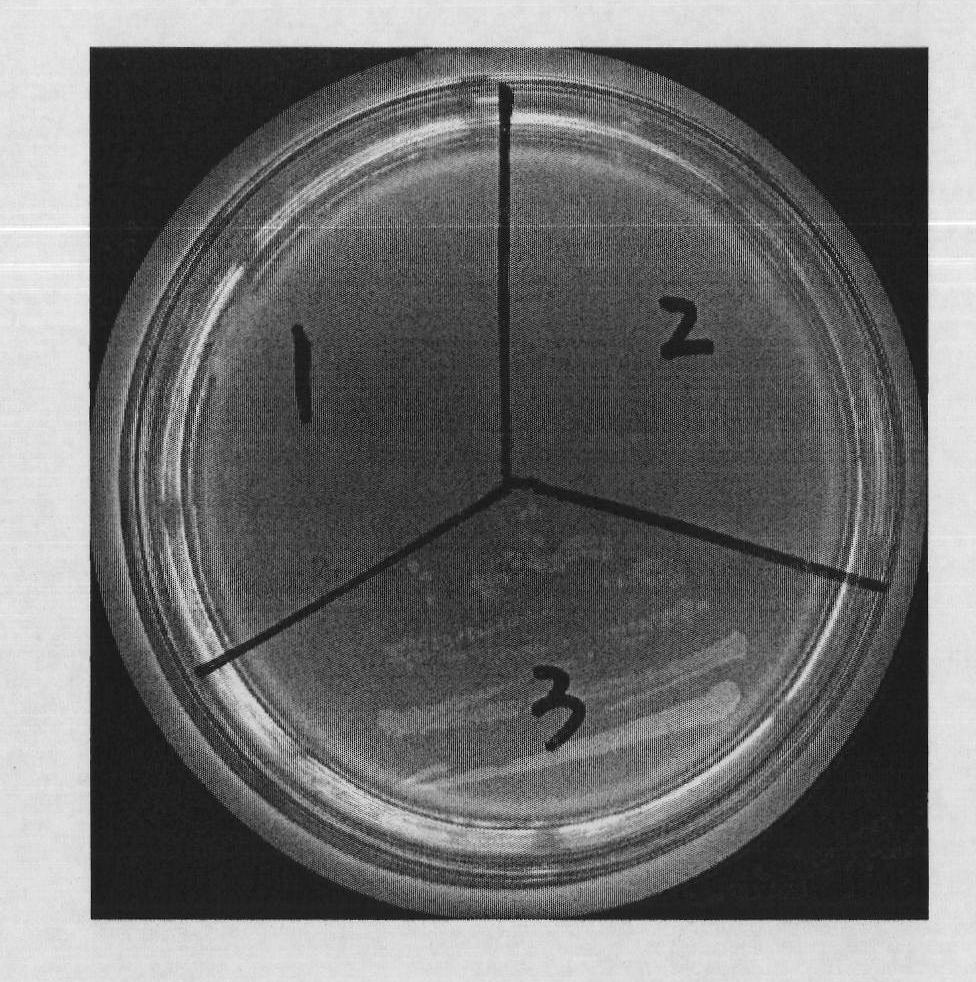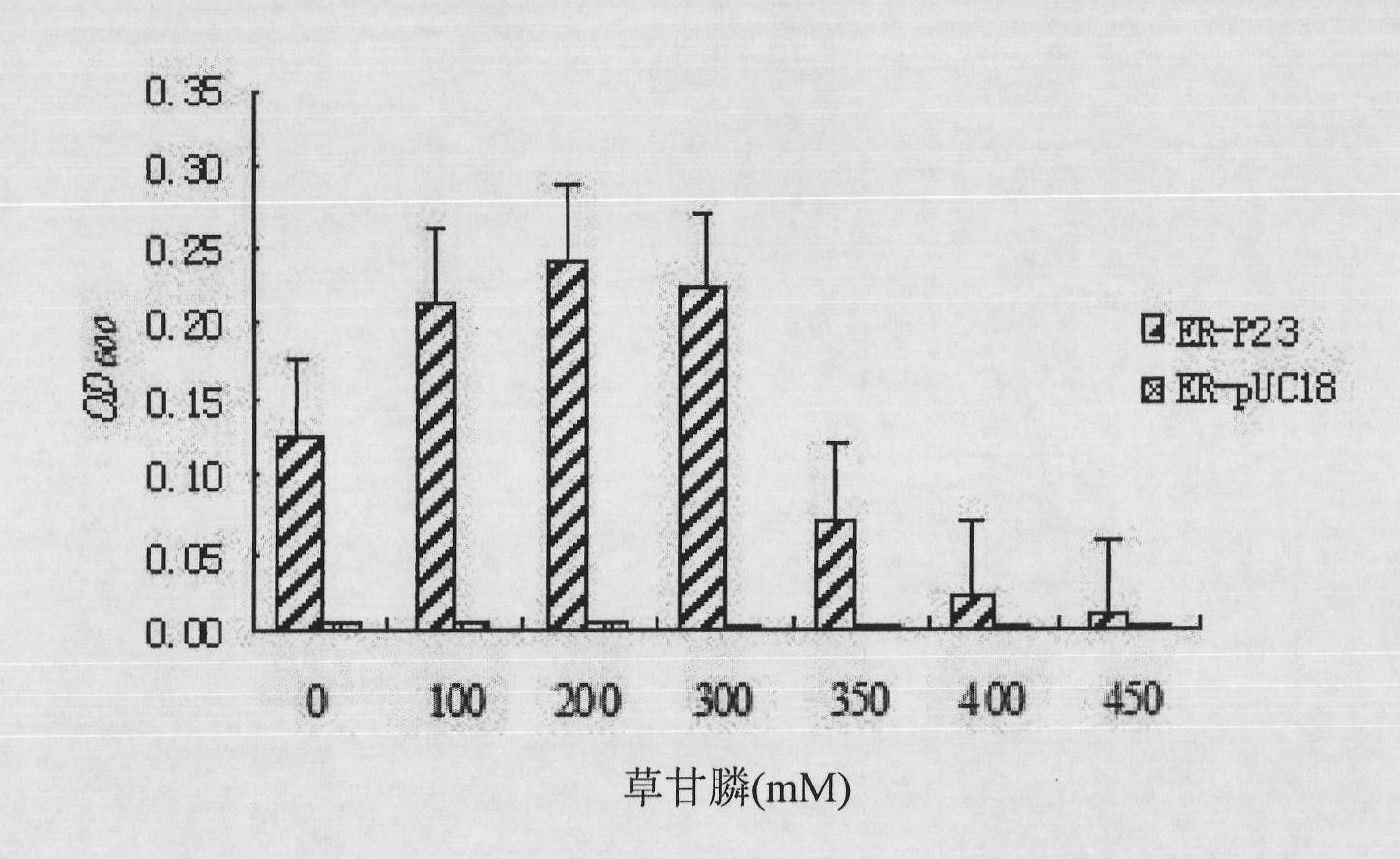Gene for encoding 5-enolpyrul-shikimate-3-phosphate synthase and application thereof
A technology of pyruvyl shikig and phosphate synthase, which is applied in the field of microbial genetic engineering and can solve problems such as affecting crop growth and crop destruction.
- Summary
- Abstract
- Description
- Claims
- Application Information
AI Technical Summary
Problems solved by technology
Method used
Image
Examples
Embodiment 1
[0018] Example 1: Obtaining the full sequence of the EPSPS coding gene of Bacillus pallidum
[0019] In the present invention, a strain of Paleobacter hominis is isolated and obtained from soil samples collected around the Nalati grassland in Xinjiang, which is named as P23. The EPSPS-encoding gene was cloned from this strain by homologous cloning.
[0020] 1. Genome extraction method: genome use The company's bacterial genomic DNA extraction kit was used for extraction, see its instructions for details.
[0021] 2. PCR amplification method
[0022] Two oligonucleotide primers were designed based on the full-length EPSPS gene sequence of Ochrobacrum anthorpi in NCBI (accession number CP000758), and the full EPSPS coding sequence of P23 was obtained by PCR amplification.
[0023] The primers are as follows:
[0024] p23F: 5'-ATGTCCCATTCTGCACCCCCGAAAC-3'
[0025] (as shown in SEQ ID No.3)
[0026] p23R: 5'-TCATCGCGCGTCGCTCAGTTCGAT-3'
[0027] (as shown in SEQ ID No.4)
...
Embodiment 2
[0052] Example 2: aroA P23 Recombination with cloning vector pUC18 and transformation of E. coli JM109
[0053] 1. PCR amplification method
[0054] According to the sequencing results of Example 1, primers were redesigned, and PCR amplification was performed from the P23 genome.
[0055] The primers are as follows:
[0056] p23F-BamH I CGGGATCCATGTCCCATTCTGCACCCCCGAAAC
[0057] (as shown in SEQ ID No.5)
[0058] p23R-SalI ACGCGTCGACTCATCGCGCGTCGCTCAGTTCGAT
[0059] (as shown in SEQ ID No.6)
[0060] PCR reaction conditions are as follows:
[0061] Sterilized distilled water 20.5μl
[0062] 2×Buffer 25μl
[0063] dNTPs (10mmol) 1μl
[0064] PrimeSTAR HS 0.5μl
[0065] P23F-BamHI (10pmol) 1μl
[0066] P23R-SalI-1 (10pmol) 1μl
[0067] DNA 1ul (50ng)
[0068]
[0069] 50μl
[0070] The PCR reaction program is as follows:
[0071] 98℃ 5min
[0072]
[0073] 4℃ forever
[0074] After the PCR amplification produ...
Embodiment 3
[0091] Example 3: P23EPSP synthase complementation experiment
[0092] 1. Experimental method:
[0093] The recombinant vector pUC18-P23 obtained in Example 2 was heat-shock transformed into EPSPS-deficient E. coli strain ER2799, and the obtained strain was named ER-pUCP23. The cloned strain ER-pUCP23, which was verified to be correct by sequencing, was spread on the M9 solid plate. At the same time, ER2799 and ER2799 transfected with empty pUC18 were used as controls.
[0094] 2. Results:
[0095] The P23 gene has the function of encoding the complete EPSPS.
PUM
 Login to View More
Login to View More Abstract
Description
Claims
Application Information
 Login to View More
Login to View More - R&D
- Intellectual Property
- Life Sciences
- Materials
- Tech Scout
- Unparalleled Data Quality
- Higher Quality Content
- 60% Fewer Hallucinations
Browse by: Latest US Patents, China's latest patents, Technical Efficacy Thesaurus, Application Domain, Technology Topic, Popular Technical Reports.
© 2025 PatSnap. All rights reserved.Legal|Privacy policy|Modern Slavery Act Transparency Statement|Sitemap|About US| Contact US: help@patsnap.com



